Abstract
The aldolase genes represent an ancient gene family with tissue-specific isozymic forms expressed only in vertebrates. The chromosomal locations of the aldolase genes provide insight into their tissue-specific and developmentally regulated expression and evolution. DNA probes for the human aldolase-A and -C genes and for an aldolase pseudogene were used to quantify and map the aldolase loci in the haploid human genome. Genomic hybridization of restriction fragments determined that all the aldolase genes exist in single copy in the haploid human genome. Spot-blot analysis of sorted chromosomes mapped human aldolase A to chromosome 16, aldolase C to chromosome 17, the pseudogene to chromosome 10; it previously had mapped the aldolase-B gene to chromosome 9. All loci are unlinked and located on to two pairs of morphologically similar chromosomes, a situation consistent with tetraploidization during isozymic and vertebrate evolution. Sequence comparisons of expressed and flanking regions support this conclusion. These locations on similar chromosome pairs correctly predicted that the aldolase pseudogene arose when sequences from the aldolase-A gene were inserted into the homologous aldolase location on chromosome 10.
Full text
PDF
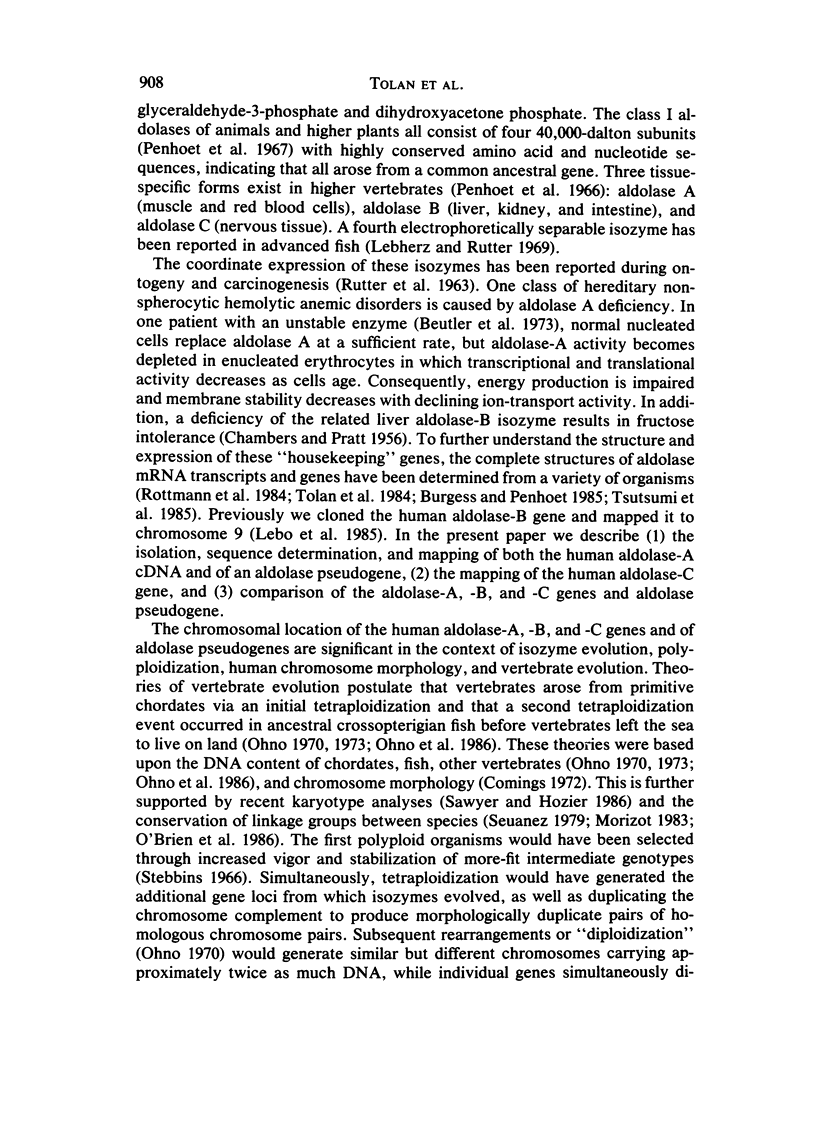
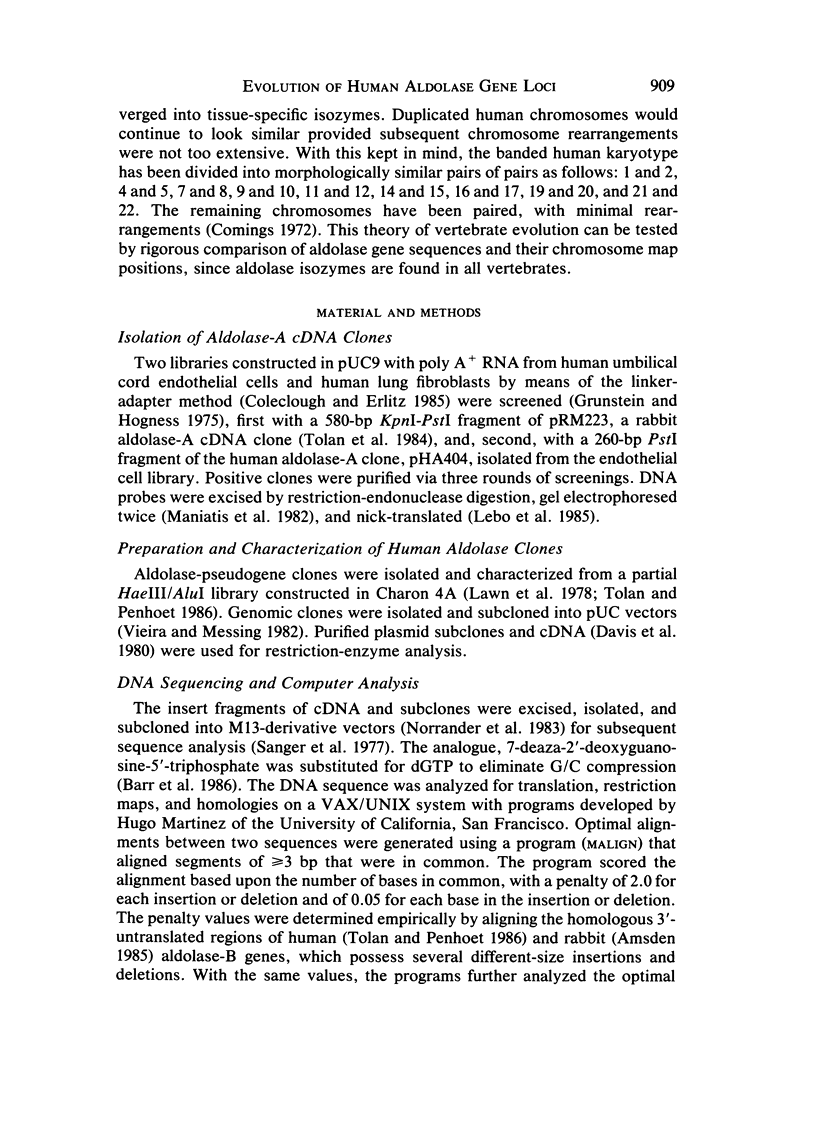

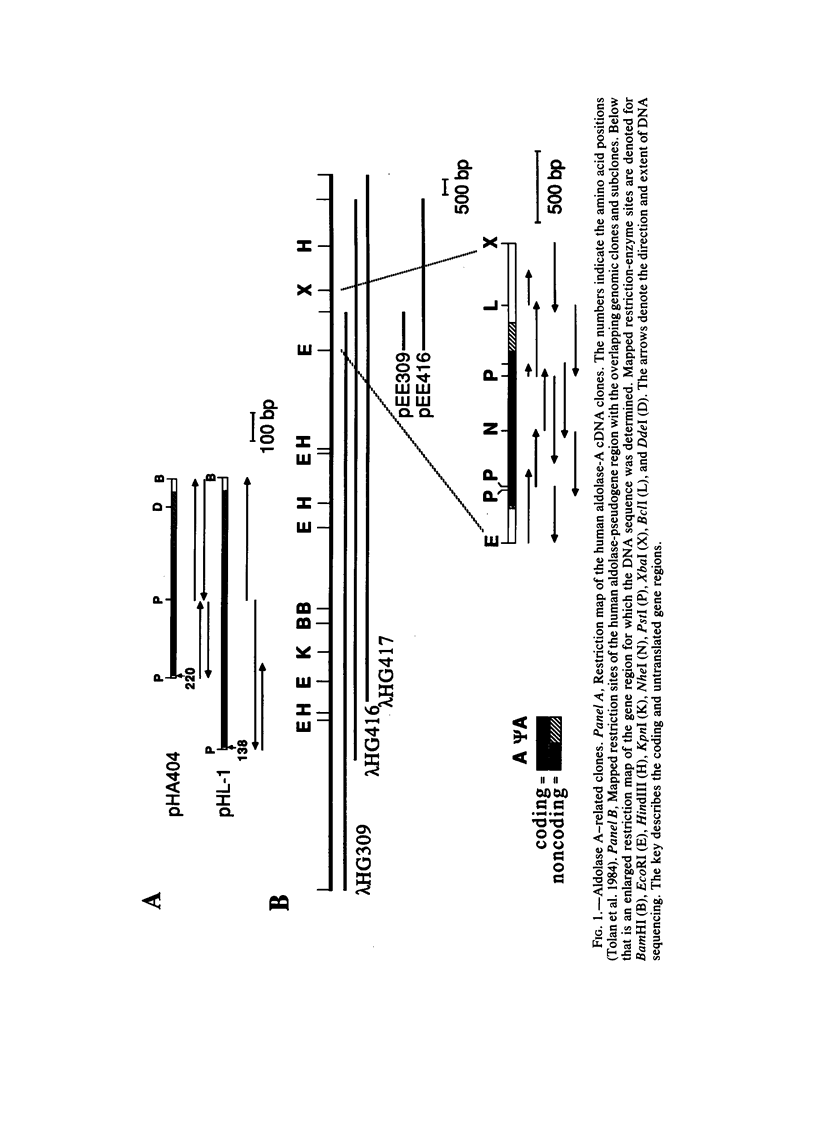
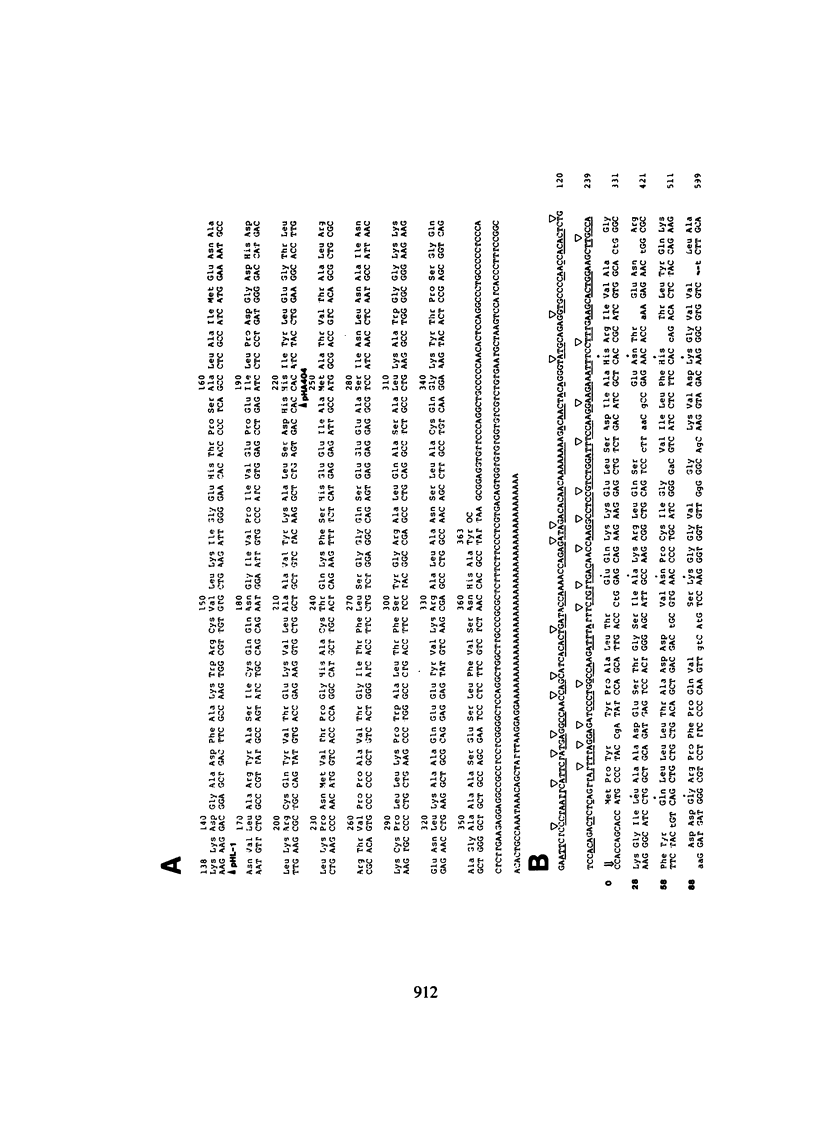
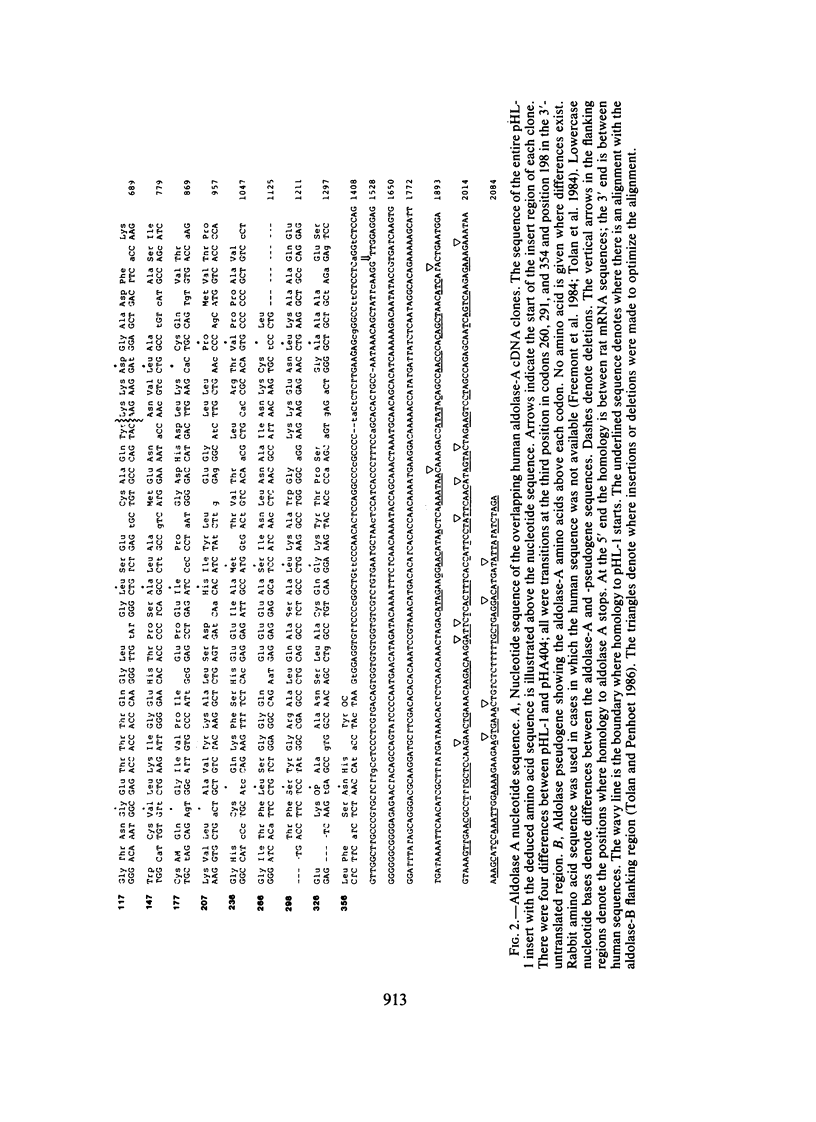
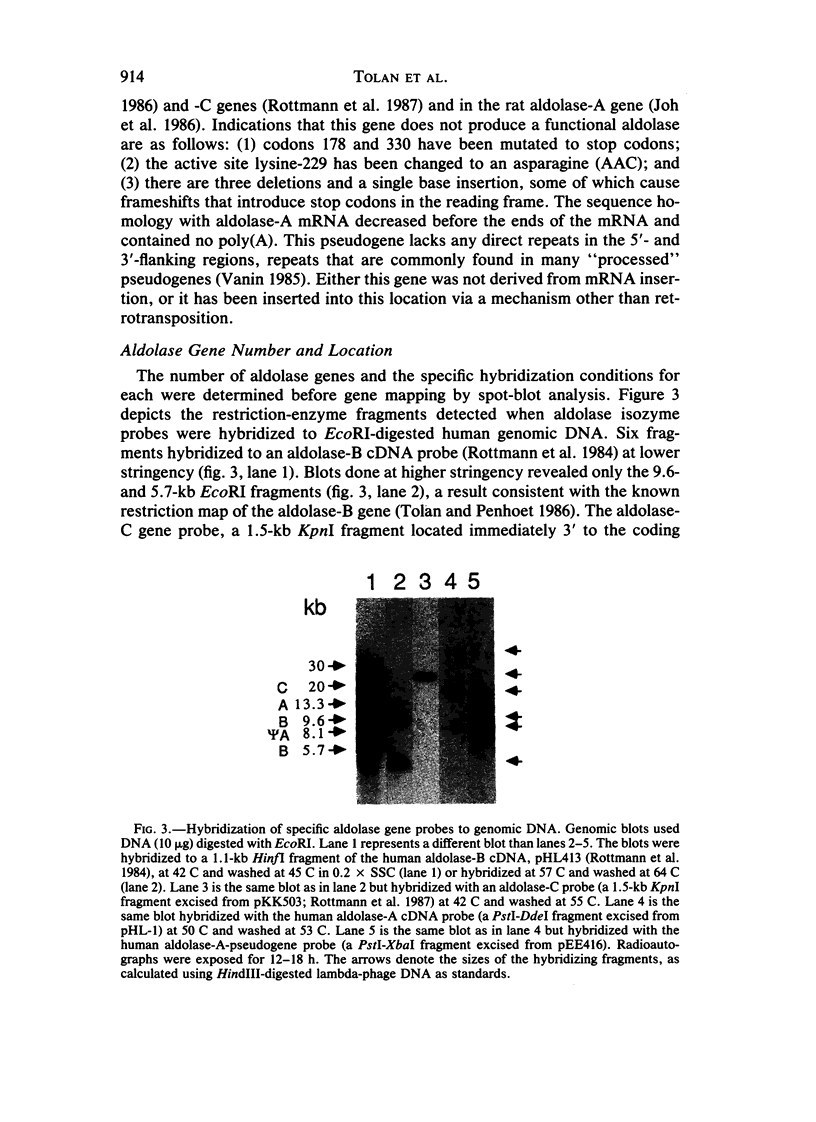
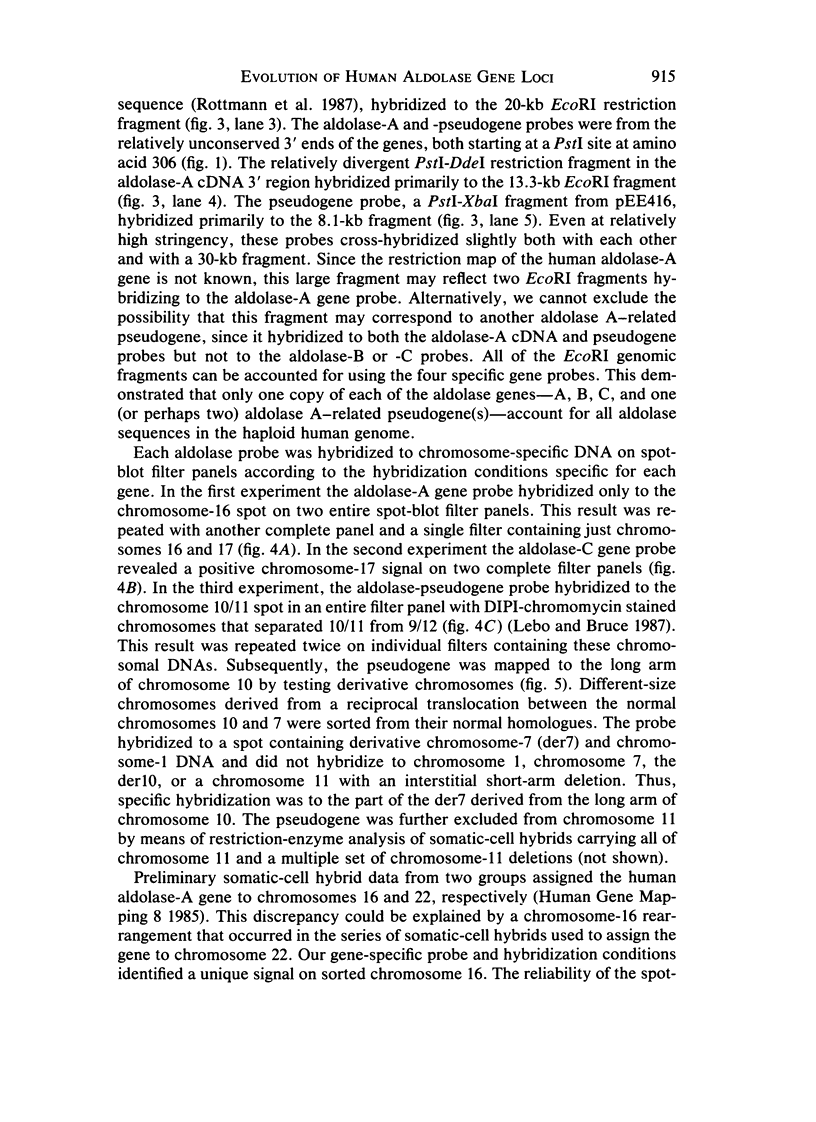
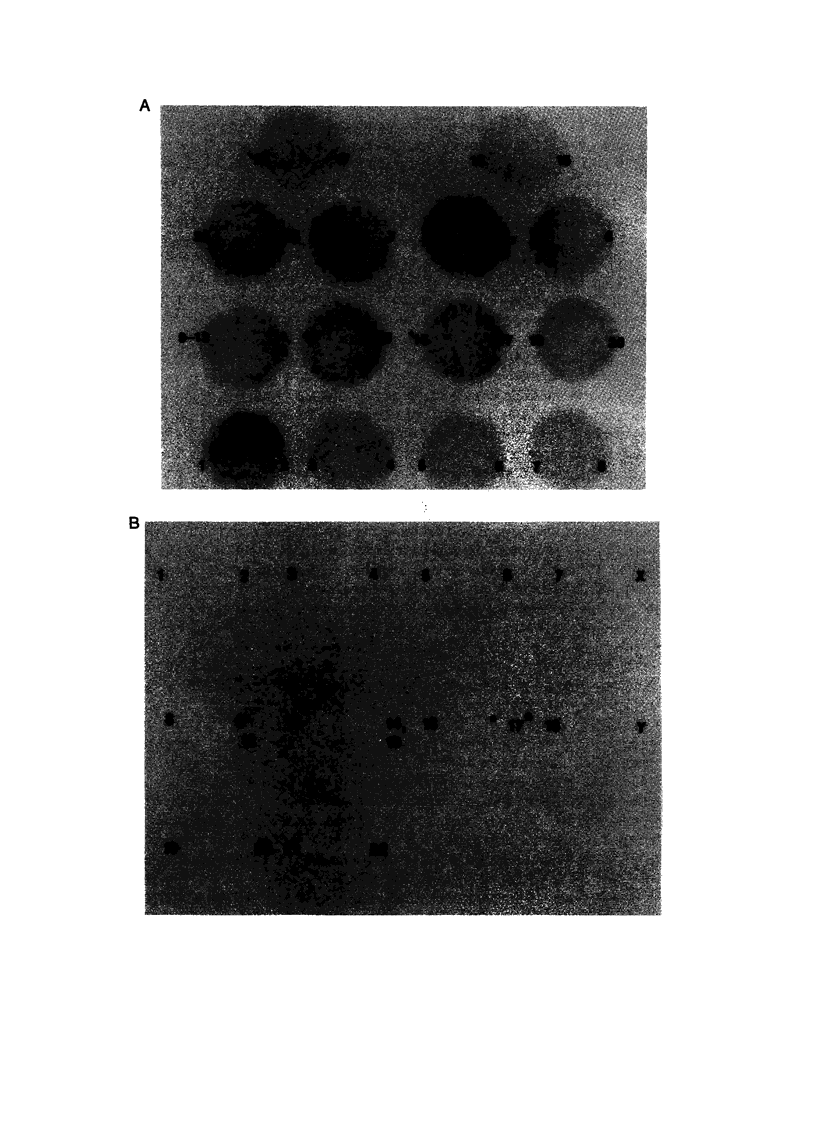
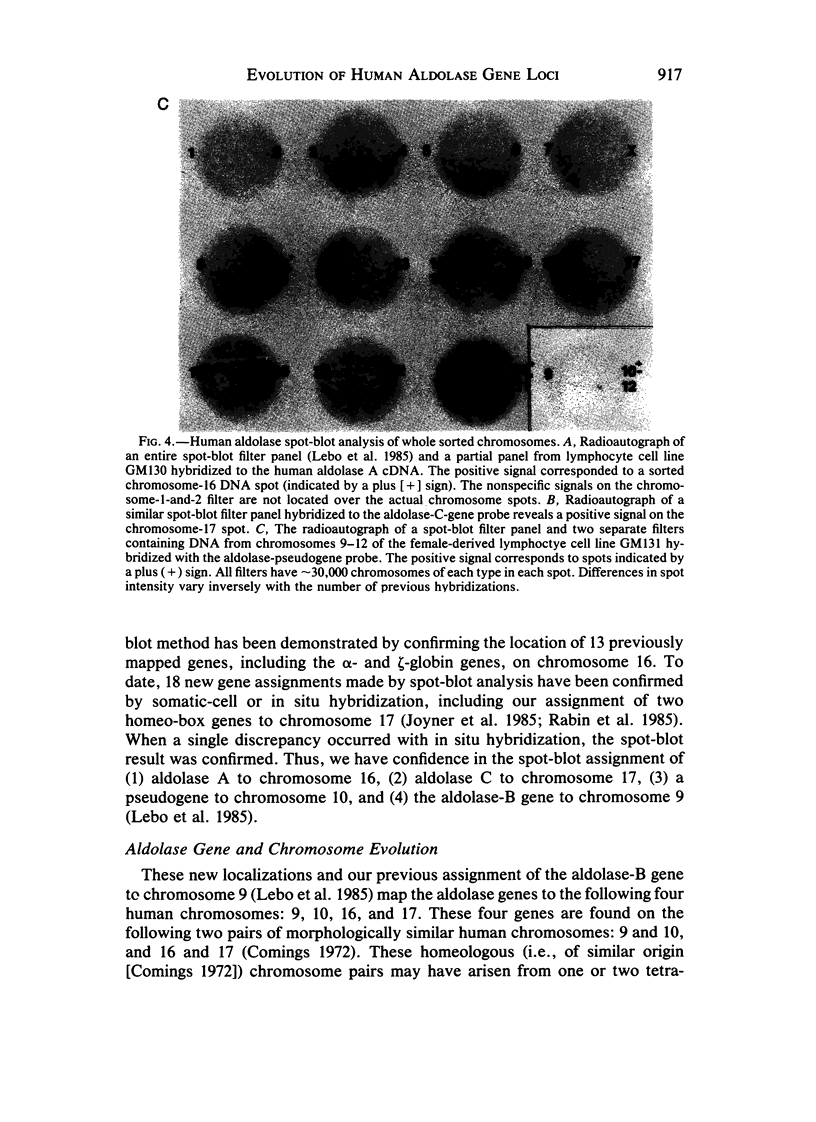

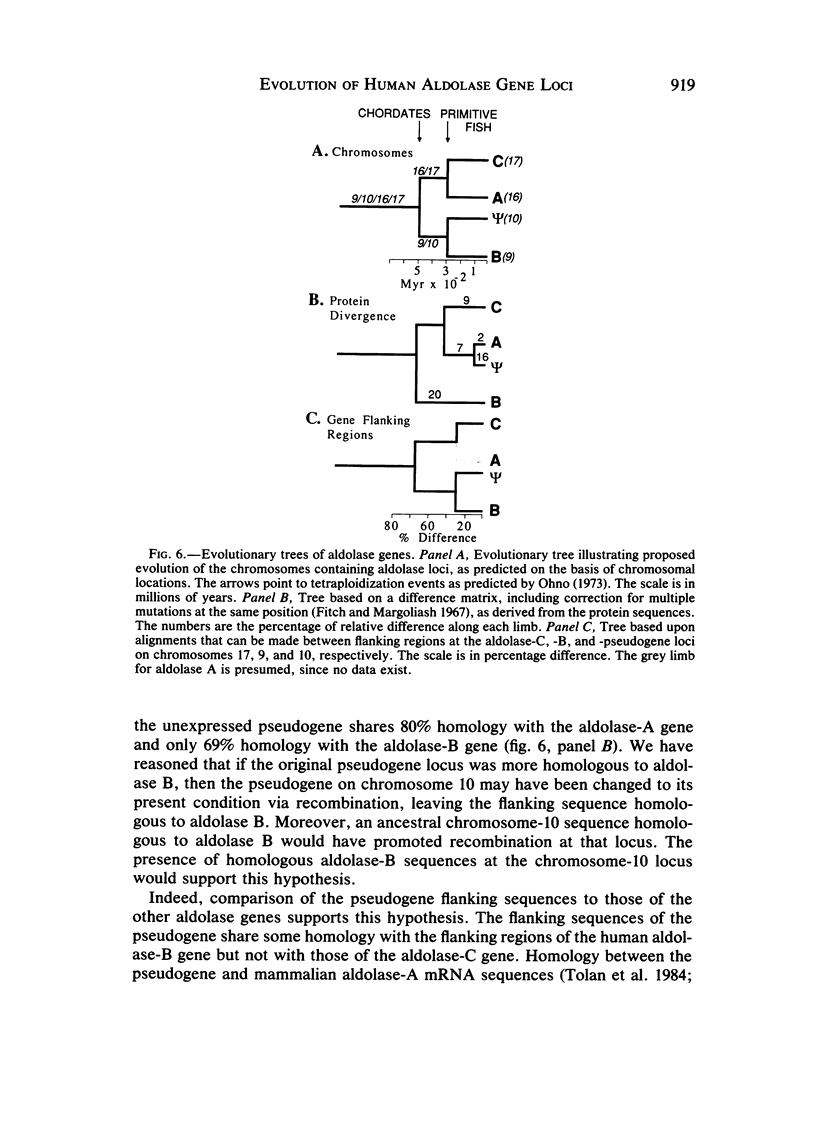
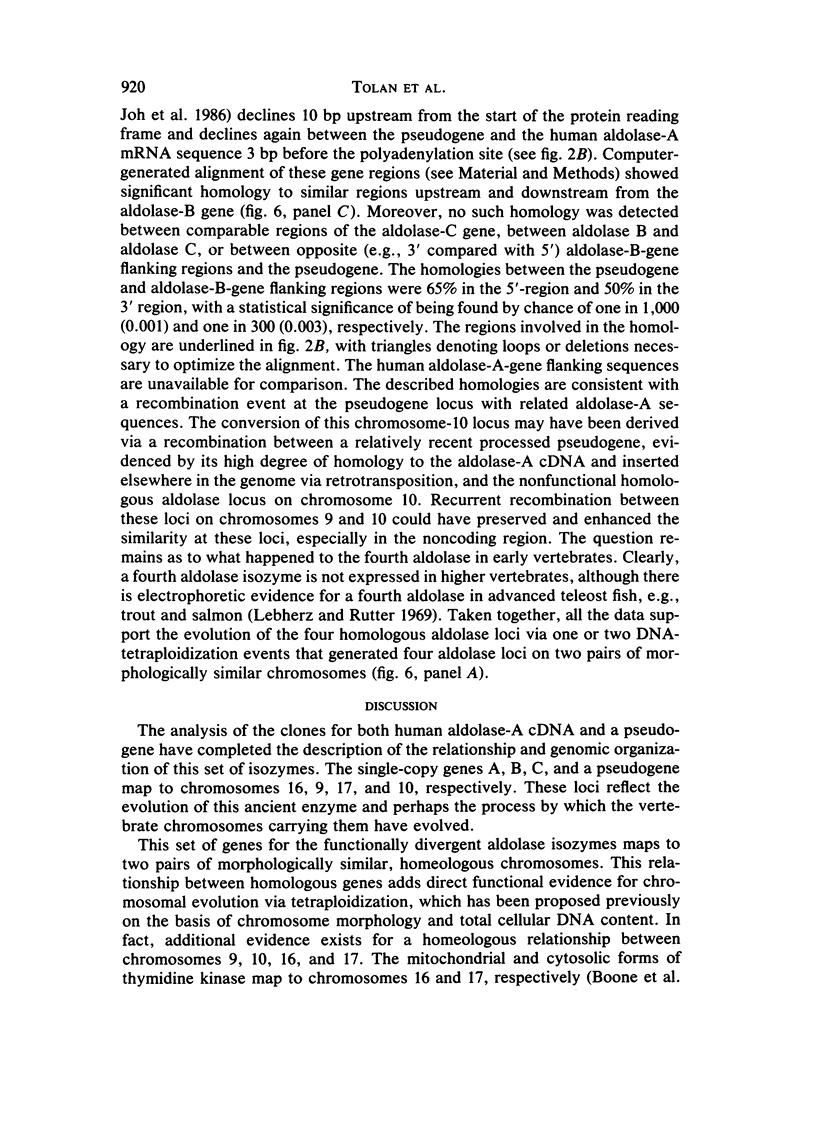
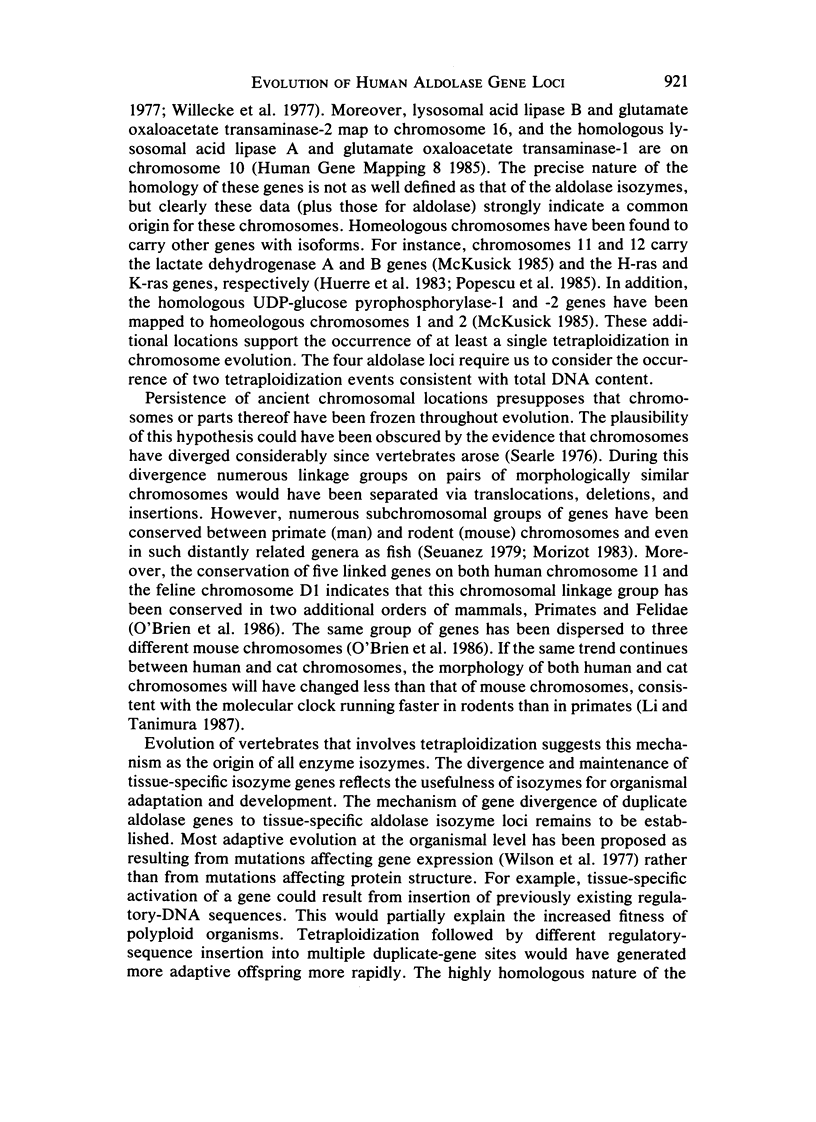
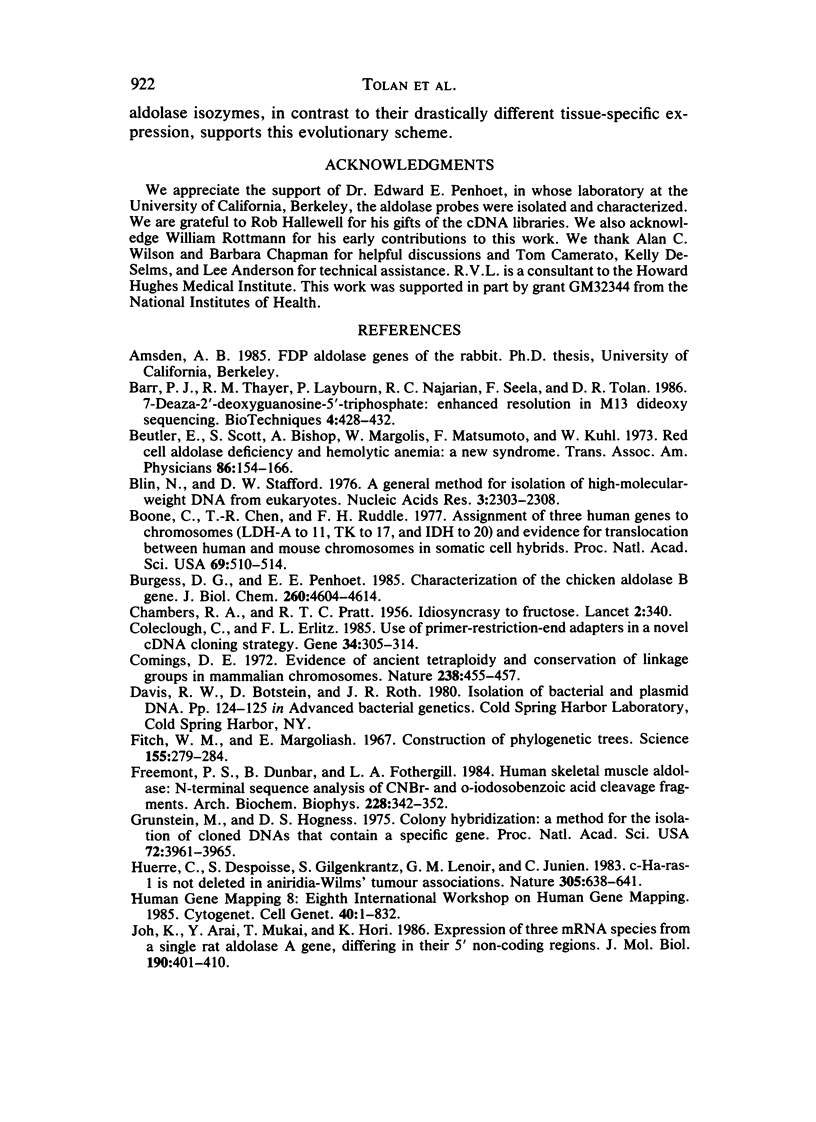
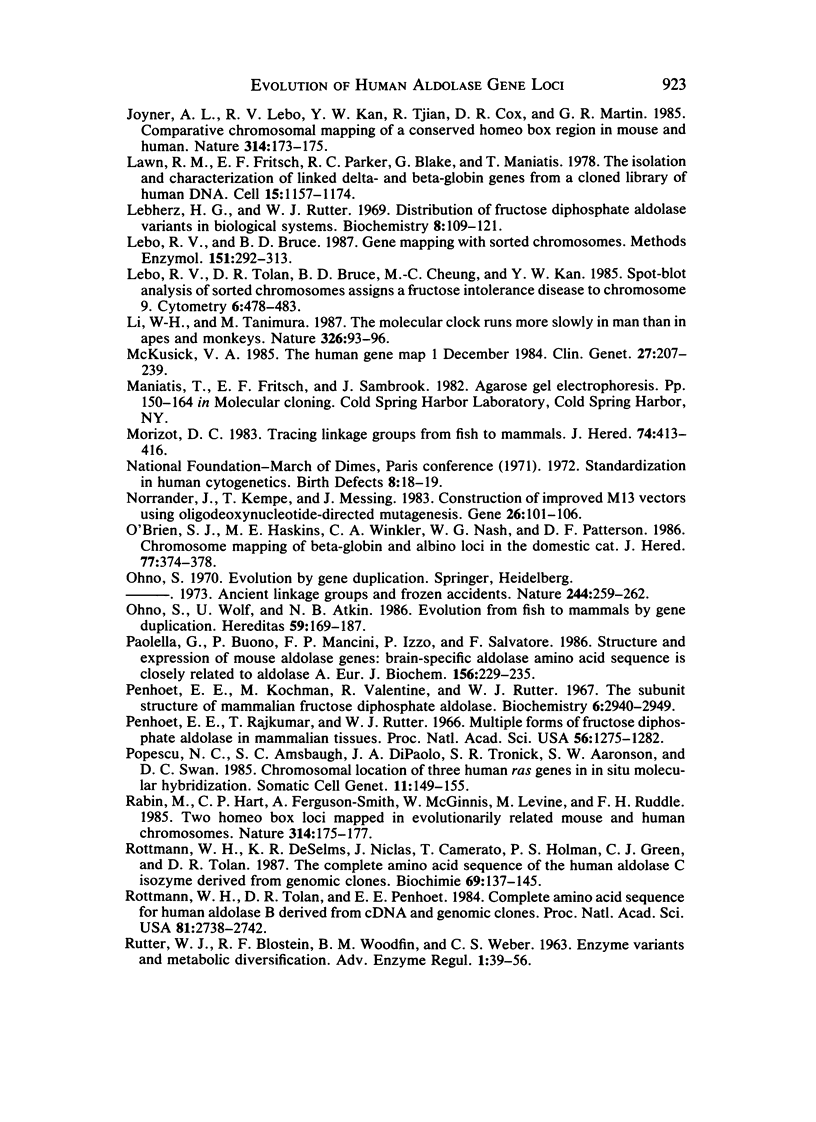
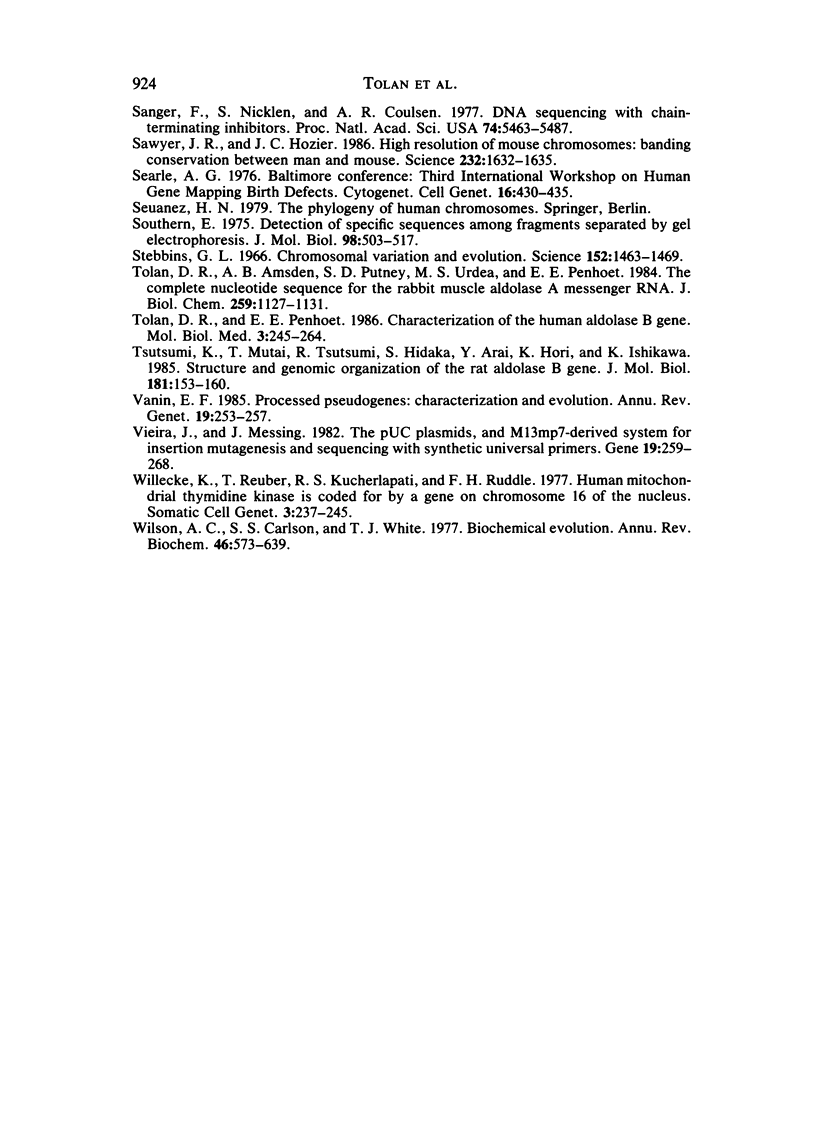
Images in this article
Selected References
These references are in PubMed. This may not be the complete list of references from this article.
- Beutler E., Scott S., Bishop A., Margolis N., Matsumoto F., Kuhl W. Red cell aldolase deficiency and hemolytic anemia: a new syndrome. Trans Assoc Am Physicians. 1973;86:154–166. [PubMed] [Google Scholar]
- Blin N., Stafford D. W. A general method for isolation of high molecular weight DNA from eukaryotes. Nucleic Acids Res. 1976 Sep;3(9):2303–2308. doi: 10.1093/nar/3.9.2303. [DOI] [PMC free article] [PubMed] [Google Scholar]
- Boone C., Chen T. R., Ruddle F. H. Assignment of three human genes to chromosomes (LDH-A to 11, TK to 17, and IDH to 20) and evidence for translocation between human and mouse chromosomes in somatic cell hybrids (thymidine kinase-lactate dehydrogenase A-isocitrate dehydrogenase-C-11, E-17, and F-20 chromosomes). Proc Natl Acad Sci U S A. 1972 Feb;69(2):510–514. doi: 10.1073/pnas.69.2.510. [DOI] [PMC free article] [PubMed] [Google Scholar]
- Burgess D. G., Penhoet E. E. Characterization of the chicken aldolase B gene. J Biol Chem. 1985 Apr 25;260(8):4604–4614. [PubMed] [Google Scholar]
- CHAMBERS R. A., PRATT R. T. Idiosyncrasy to fructose. Lancet. 1956 Aug 18;271(6938):340–340. doi: 10.1016/s0140-6736(56)92196-1. [DOI] [PubMed] [Google Scholar]
- Coleclough C., Erlitz F. L. Use of primer-restriction-end adapters in a novel cDNA cloning strategy. Gene. 1985;34(2-3):305–314. doi: 10.1016/0378-1119(85)90139-8. [DOI] [PubMed] [Google Scholar]
- Comings D. E. Evidence for ancient tetraploidy and conservation of linkage groups in mammalian chromosomes. Nature. 1972 Aug 25;238(5365):455–457. doi: 10.1038/238455a0. [DOI] [PubMed] [Google Scholar]
- Fitch W. M., Margoliash E. Construction of phylogenetic trees. Science. 1967 Jan 20;155(3760):279–284. doi: 10.1126/science.155.3760.279. [DOI] [PubMed] [Google Scholar]
- Freemont P. S., Dunbar B., Fothergill L. A. Human skeletal-muscle aldolase: N-terminal sequence analysis of CNBr- and o-iodosobenzoic acid-cleavage fragments. Arch Biochem Biophys. 1984 Jan;228(1):342–352. doi: 10.1016/0003-9861(84)90075-4. [DOI] [PubMed] [Google Scholar]
- Grunstein M., Hogness D. S. Colony hybridization: a method for the isolation of cloned DNAs that contain a specific gene. Proc Natl Acad Sci U S A. 1975 Oct;72(10):3961–3965. doi: 10.1073/pnas.72.10.3961. [DOI] [PMC free article] [PubMed] [Google Scholar]
- Huerre C., Despoisse S., Gilgenkrantz S., Lenoir G. M., Junien C. c-Ha-ras1 is not deleted in aniridia-Wilms' tumour association. Nature. 1983 Oct 13;305(5935):638–641. doi: 10.1038/305638a0. [DOI] [PubMed] [Google Scholar]
- Joh K., Arai Y., Mukai T., Hori K. Expression of three mRNA species from a single rat aldolase A gene, differing in their 5' non-coding regions. J Mol Biol. 1986 Aug 5;190(3):401–410. doi: 10.1016/0022-2836(86)90011-2. [DOI] [PubMed] [Google Scholar]
- Joyner A. L., Lebo R. V., Kan Y. W., Tjian R., Cox D. R., Martin G. R. Comparative chromosome mapping of a conserved homoeo box region in mouse and human. Nature. 1985 Mar 14;314(6007):173–175. doi: 10.1038/314173a0. [DOI] [PubMed] [Google Scholar]
- Lawn R. M., Fritsch E. F., Parker R. C., Blake G., Maniatis T. The isolation and characterization of linked delta- and beta-globin genes from a cloned library of human DNA. Cell. 1978 Dec;15(4):1157–1174. doi: 10.1016/0092-8674(78)90043-0. [DOI] [PubMed] [Google Scholar]
- Lebherz H. G., Rutter W. J. Distribution of fructose diphosphate aldolase variants in biological systems. Biochemistry. 1969 Jan;8(1):109–121. doi: 10.1021/bi00829a016. [DOI] [PubMed] [Google Scholar]
- Lebo R. V., Bruce B. D. Gene mapping with sorted chromosomes. Methods Enzymol. 1987;151:292–313. doi: 10.1016/s0076-6879(87)51025-4. [DOI] [PubMed] [Google Scholar]
- Lebo R. V., Tolan D. R., Bruce B. D., Cheung M. C., Kan Y. W. Spot-blot analysis of sorted chromosomes assigns a fructose intolerance disease locus to chromosome 9. Cytometry. 1985 Sep;6(5):478–483. doi: 10.1002/cyto.990060513. [DOI] [PubMed] [Google Scholar]
- Li W. H., Tanimura M. The molecular clock runs more slowly in man than in apes and monkeys. Nature. 1987 Mar 5;326(6108):93–96. doi: 10.1038/326093a0. [DOI] [PubMed] [Google Scholar]
- McKusick V. A. The human gene map 1 December 1984. Clin Genet. 1985 Feb;27(2):207–239. doi: 10.1111/j.1399-0004.1985.tb00214.x. [DOI] [PMC free article] [PubMed] [Google Scholar]
- Norrander J., Kempe T., Messing J. Construction of improved M13 vectors using oligodeoxynucleotide-directed mutagenesis. Gene. 1983 Dec;26(1):101–106. doi: 10.1016/0378-1119(83)90040-9. [DOI] [PubMed] [Google Scholar]
- O'Brien S. J., Haskins M. E., Winkler C. A., Nash W. G., Patterson D. F. Chromosomal mapping of beta-globin and albino loci in the domestic cat. A conserved mammalian chromosome group. J Hered. 1986 Nov-Dec;77(6):374–378. doi: 10.1093/oxfordjournals.jhered.a110264. [DOI] [PubMed] [Google Scholar]
- Ohno S., Wolf U., Atkin N. B. Evolution from fish to mammals by gene duplication. Hereditas. 1968;59(1):169–187. doi: 10.1111/j.1601-5223.1968.tb02169.x. [DOI] [PubMed] [Google Scholar]
- Paolella G., Buono P., Mancini F. P., Izzo P., Salvatore F. Structure and expression of mouse aldolase genes. Brain-specific aldolase C amino acid sequence is closely related to aldolase A. Eur J Biochem. 1986 Apr 15;156(2):229–235. doi: 10.1111/j.1432-1033.1986.tb09572.x. [DOI] [PubMed] [Google Scholar]
- Penhoet E., Kochman M., Valentine R., Rutter W. J. The subunit structure of mammalian fructose diphosphate aldolase. Biochemistry. 1967 Sep;6(9):2940–2949. doi: 10.1021/bi00861a039. [DOI] [PubMed] [Google Scholar]
- Penhoet E., Rajkumar T., Rutter W. J. Multiple forms of fructose diphosphate aldolase in mammalian tissues. Proc Natl Acad Sci U S A. 1966 Oct;56(4):1275–1282. doi: 10.1073/pnas.56.4.1275. [DOI] [PMC free article] [PubMed] [Google Scholar]
- Popescu N. C., Amsbaugh S. C., DiPaolo J. A., Tronick S. R., Aaronson S. A., Swan D. C. Chromosomal localization of three human ras genes by in situ molecular hybridization. Somat Cell Mol Genet. 1985 Mar;11(2):149–155. doi: 10.1007/BF01534703. [DOI] [PubMed] [Google Scholar]
- RUTTER W. J., BLOSTEIN R. E., WOODFIN B. M., WEBER C. S. ENZYME VARIANTS AND METABOLIC DIVERSIFICATION. Adv Enzyme Regul. 1963;1:39–56. doi: 10.1016/0065-2571(63)90005-0. [DOI] [PubMed] [Google Scholar]
- Rabin M., Hart C. P., Ferguson-Smith A., McGinnis W., Levine M., Ruddle F. H. Two homoeo box loci mapped in evolutionarily related mouse and human chromosomes. Nature. 1985 Mar 14;314(6007):175–178. doi: 10.1038/314175a0. [DOI] [PubMed] [Google Scholar]
- Rottmann W. H., Deselms K. R., Niclas J., Camerato T., Holman P. S., Green C. J., Tolan D. R. The complete amino acid sequence of the human aldolase C isozyme derived from genomic clones. Biochimie. 1987 Feb;69(2):137–145. doi: 10.1016/0300-9084(87)90246-x. [DOI] [PubMed] [Google Scholar]
- Rottmann W. H., Tolan D. R., Penhoet E. E. Complete amino acid sequence for human aldolase B derived from cDNA and genomic clones. Proc Natl Acad Sci U S A. 1984 May;81(9):2738–2742. doi: 10.1073/pnas.81.9.2738. [DOI] [PMC free article] [PubMed] [Google Scholar]
- Sanger F., Nicklen S., Coulson A. R. DNA sequencing with chain-terminating inhibitors. Proc Natl Acad Sci U S A. 1977 Dec;74(12):5463–5467. doi: 10.1073/pnas.74.12.5463. [DOI] [PMC free article] [PubMed] [Google Scholar]
- Sawyer J. R., Hozier J. C. High resolution of mouse chromosomes: banding conservation between man and mouse. Science. 1986 Jun 27;232(4758):1632–1635. doi: 10.1126/science.3715469. [DOI] [PubMed] [Google Scholar]
- Searle A. G. Clues to homologous regions in mammalian autosomes. Birth Defects Orig Artic Ser. 1976;12(7):430–435. [PubMed] [Google Scholar]
- Southern E. M. Detection of specific sequences among DNA fragments separated by gel electrophoresis. J Mol Biol. 1975 Nov 5;98(3):503–517. doi: 10.1016/s0022-2836(75)80083-0. [DOI] [PubMed] [Google Scholar]
- Stebbins G. L. Chromosomal variation and evolution. Science. 1966 Jun 10;152(3728):1463–1469. doi: 10.1126/science.152.3728.1463. [DOI] [PubMed] [Google Scholar]
- Tolan D. R., Amsden A. B., Putney S. D., Urdea M. S., Penhoet E. E. The complete nucleotide sequence for rabbit muscle aldolase A messenger RNA. J Biol Chem. 1984 Jan 25;259(2):1127–1131. [PubMed] [Google Scholar]
- Tolan D. R., Penhoet E. E. Characterization of the human aldolase B gene. Mol Biol Med. 1986 Jun;3(3):245–264. [PubMed] [Google Scholar]
- Tsutsumi K., Mukai T., Tsutsumi R., Hidaka S., Arai Y., Hori K., Ishikawa K. Structure and genomic organization of the rat aldolase B gene. J Mol Biol. 1985 Jan 20;181(2):153–160. doi: 10.1016/0022-2836(85)90081-6. [DOI] [PubMed] [Google Scholar]
- Vanin E. F. Processed pseudogenes: characteristics and evolution. Annu Rev Genet. 1985;19:253–272. doi: 10.1146/annurev.ge.19.120185.001345. [DOI] [PubMed] [Google Scholar]
- Vieira J., Messing J. The pUC plasmids, an M13mp7-derived system for insertion mutagenesis and sequencing with synthetic universal primers. Gene. 1982 Oct;19(3):259–268. doi: 10.1016/0378-1119(82)90015-4. [DOI] [PubMed] [Google Scholar]
- Willecke K., Teber T., Kucherlapati R. S., Ruddle F. H. Human mitochondrial thymidine kinase is coded for by a gene on chromosome 16 of the nucleus. Somatic Cell Genet. 1977 May;3(3):237–245. doi: 10.1007/BF01538743. [DOI] [PubMed] [Google Scholar]
- Wilson A. C., Carlson S. S., White T. J. Biochemical evolution. Annu Rev Biochem. 1977;46:573–639. doi: 10.1146/annurev.bi.46.070177.003041. [DOI] [PubMed] [Google Scholar]






